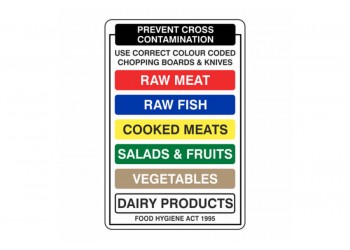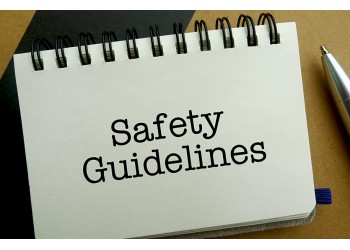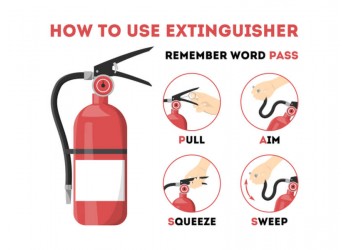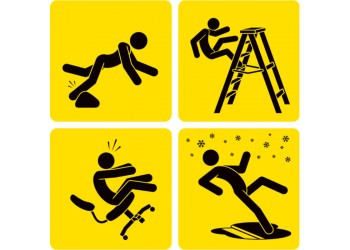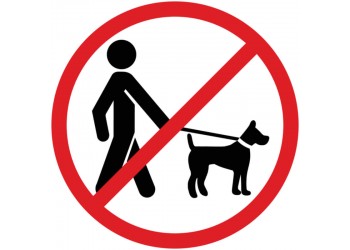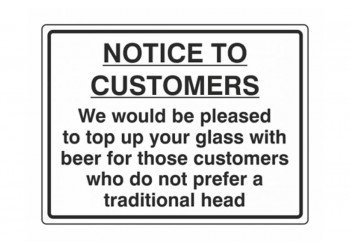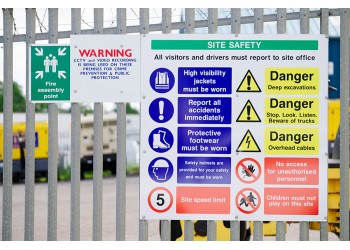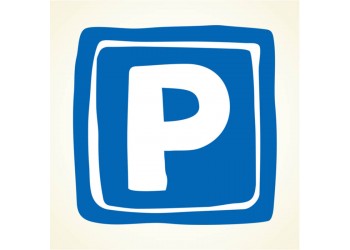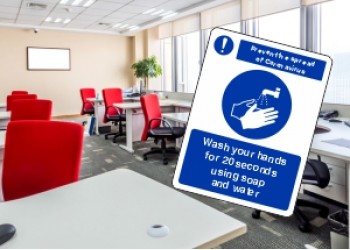The catering industry is unique in many ways. The risks and hazards posed here don’t just impact you and your employees. They can also extend further afield, potentially causing harm to customers and even guests, in some instances. For this reason, you must prioritise safety in the workplace. And, one way of doing this is to implement the right catering safety signs. Today’s blog will walk you through the different essential signs that you should consider in your business.
When to use catering safety signs?
As with any busy premises, the use of safety signs should always be well-considered. You want to identify the risks, how significant they are and who they are likely to impact. Performing regular, structured risk assessments are the best way to do this. From the information you uncover, you’ll be able to pinpoint exactly where additional information or advice is needed to either reduce or eliminate a hazard.
Must-have catering safety signs
There are 2 main situations where you will need signs for your catering business – to avoid contamination during food preparation/storage etc and to ensure employee safety. If your business also offers a restaurant or sit-down service, there are also additional signs that may be suitable.
Catering safety signs for hygiene
Food contamination or spoilage are detrimental for both a businesses reputation and their potential customers. The Food Standards Agency offers advice on the regulations that govern this, including the Food Standards Act 1999, the Food Safety Order 1991 and the General Food Law. To stay compliant and within the law, you need to take measures to prevent unhygienic practices during these stages of food preparation.
Within your business, you may need to consider the following signs:
- Hygiene Notice Sign.
- Wash Hands When Handling Raw Meat.
- Wash Hands Before Handling Food.
- Wear Hairnets.
- Wash Utensils Only.
- Do Not Store Raw And Cooked Food Together.
- Wash Your Hands After Going To The Toilet.
- This Is A Food Production Area.
- Keep Raw Meats and Fish At Bottom Of Fridge.
- All Food Must Be Covered And Dated.
- Food Preparation Area Veg And Salad Only.
- Raw Meat Below Cooked Meat.
Employee Safety
The risk of injury in many catering environments is significant. Consider the number of sharp knives, hot oils and heavy machinery at work. The right employee safety signs work to minimise hazards and prevent injury. In turn, this improves productivity and reduces staff sickness to keep your business running smoothly.
Within your catering business, you may need to consider the following signs:
- Work Safely With Cooker & Ovens.
- Caution Hot Surface, Do Not Touch.
- Warning, Dangerous Machine Catering Sign.
- Caution, Very Hot Water.
- The Safe Use Of Knives.
- Convection Oven Signs.
- Steaming Oven Sign.
- Slicing Oven Sign.
- Deep Fat Fryer Sign.
- Caution This Machine Can Be Dangerous.
Here at Lasting Impressions, we stock a wide range of catering safety signs to suit businesses of all sizes. If you would like more information about any of the signs available on our website or cannot find what you’re looking for, get in contact with the team here today.
